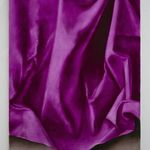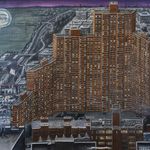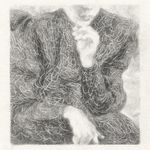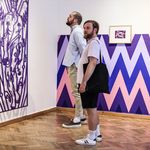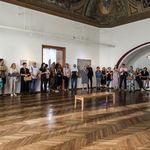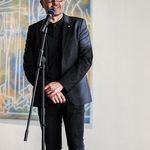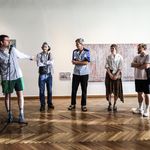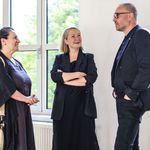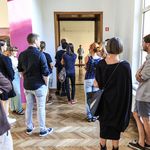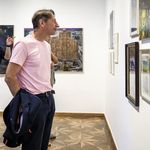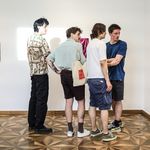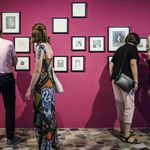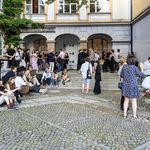Invisible Hand

Invisible Hand
The Image from Studio to Algorithm
UGM | Maribor Art Gallery, Strossmayerjeva 6
7 July - 8 October 2023
opening: Friday, 7 July 2023, 19.00
artists: Matija Bobičić, Evgen Čopi Gorišek, Jure Kastelic, Zsófia Keresztes, Natalia Kulka, Gašper Kunšič, Alex Macedo, David Rappeneau, Katharina Schilling, Stipan Tadić
curator: Jure Kirbiš
Invisible Hand is an attempt to position us within the complex dynamics at play in the world of contemporary art today. The beginning of the decade saw some exceptional factors shaping the world, and the art landscape adapted to those changes accordingly. The concurrent extremes of the physical world coming to an abrupt halt while we advanced into the metaverse with supersonic acceleration affected all aspects of life, including art, yielding unpredictable new formations. This exhibition showcases a selection of artists who have activated the infinite allure of the image as a conduit between the digital and material worlds.
As the tech community came up with often misguided solutions – NFT mania, online exhibitions, virtual reality – so the pendulum swung in the other direction. The absence of touch engendered a desire for the physical, the corporeal, the human. Also, for the indeterminable and the rare. Under these conditions, the cycle that throughout the last century moved across all formations of art – from conceptualism to hyperreality – once again reached a point where the art object came to the fore. In a time when the world is at our fingertips, the object – and its image – must carve out a place for itself as well. And if the hand, according to Kant, is the visible part of the brain, then today the image is the visible part of the algorithm.
The art system, much like the algorithm, is a complex organism primarily concerned with maintaining its own existence. It evolves, learns and removes bugs in the system through updates, optimisation, upgrades. In the early days of computing, bugs were removed manually – they were actual insects in the circuit boards that caused malfunctions – however today the process is largely automated. For the art system, the bug is the art itself. It is the factor that the algorithm encounters each time it is about to face change. The artist's task is to create a bug that the art system will not be able to circumvent and will have to absorb and integrate into itself.
The artists in the exhibition each act as avatars of various currents in contemporary art. By instrumentalising the image, they skilfully manoeuvre between the object created in the studio and a globally plugged-in audience. In their works, they invite us into thoughtfully crafted worlds of their own cosmologies, which, even when transmitted into a digital image, retain the aura of the artist's signature. Yet the image is not limited only to the reproduction of the object, but goes hand in hand with the image of the artist as well. In this sense, along with the crisis of criticism and journalism, artists have taken the matter of their own image into their own hands. With worldbuilding in art and storytelling in art spaces, online being one of those spaces – working in the studio, attending exhibition openings, sharing their point of view, appearing in a network of acquaintances – they create ground for establishing a parasocial relationship between the audiences and their work and persona.
The exhibition is conceived in the spirit of techno-optimism, where technology – like the paintbrush – is a tool in the hands of the artists, with which to wield the invisible forces of the art system to their advantage. Through their online presence, artists feed the algorithm, keeping the system alive by continuously transforming it for the needs of the present day. Throughout this process, the gallery becomes a liminal space of art, where a first-hand encounter with art is still possible.
